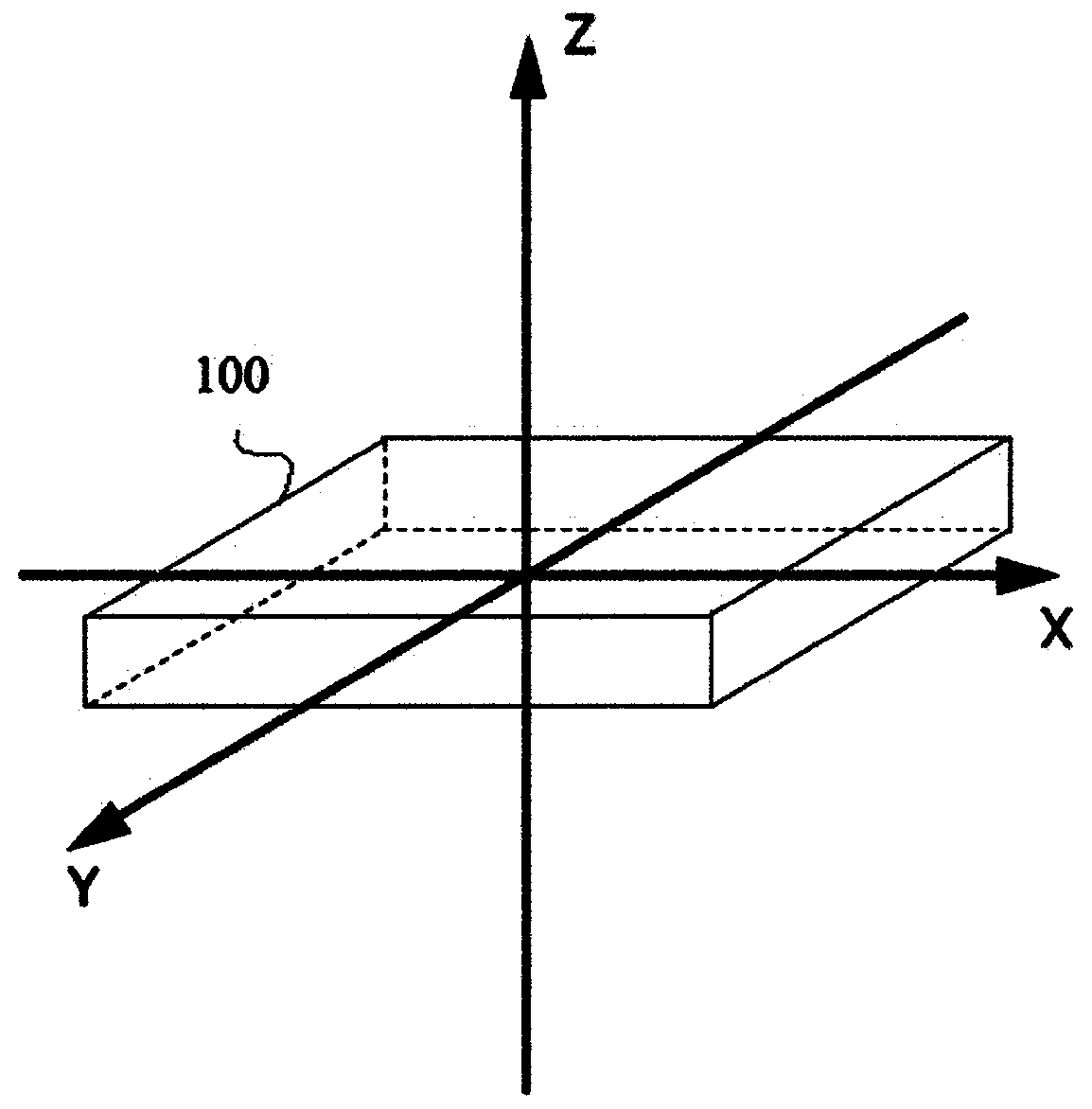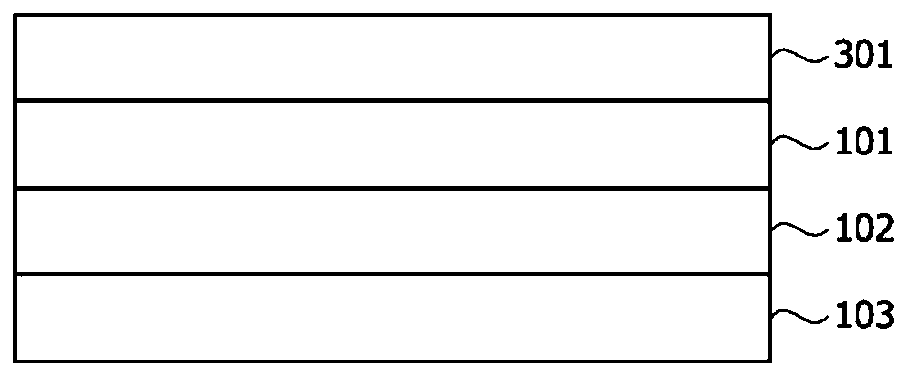Circular polarizing plate
A technology of circular polarizing plates and polarizers, applied in optics, polarizing elements, optical elements, etc., can solve problems such as color perception changes, process simplification, cost competitiveness is not optimal, and affect display quality
- Summary
- Abstract
- Description
- Claims
- Application Information
AI Technical Summary
Problems solved by technology
Method used
Image
Examples
preparation example 1
[0275] Preparation Example 1. Preparation of Polymerizable Liquid Crystal Composition A
[0276] A polymerizable liquid crystal composition was prepared using LC1057 liquid crystal of BASF Corporation as a normal dispersion polymerizable liquid crystal compound and a liquid crystal compound of the following formula A as an anomalous dispersion liquid crystal compound. The normal dispersion polymerizable liquid crystal compound has R(450) / R(550) at a level of about 1.09 to 1.11 and R(650) / R(550) at a level of about 0.93 to 0.95, and the liquid crystal compound of formula A R(450) / R(550) is at a level around 0.84 to 0.86 and R(650) / R(550) is at a level around 1.01 to 1.03. R(450), R(550) and R(650) are the values for wavelengths of 450nm, 550nm and 650nm measured for the phase difference layer formed by using the normal dispersion polymerizable liquid crystal compound or the polymerizable liquid crystal compound of formula A alone. In-plane phase difference of light. The in-...
preparation example 2
[0302] Preparation Example 2. Preparation of Polymerizable Liquid Crystal Composition B
[0303] A polymerizable liquid crystal composition B was prepared in the same manner as in Preparation Example 1, except that a liquid crystal compound of the following formula B was used as the anomalous dispersion polymerizable liquid crystal compound. The liquid crystal compound of formula B has R(450) / R(550) at a level of about 0.81 to 0.83, and R(650) / R(550) at a level of about 1.01 to 1.03. R(450), R(550) and R(650) are in-plane retardation to light of wavelengths of 450nm, 550nm and 650nm measured for the retardation layer formed by using the polymerizable liquid crystal compound of formula B alone.
[0304] [Formula B]
[0305]
[0306] Here, the compound of formula B was obtained by obtaining a compound represented by the following formula A9 in the same manner as in Preparation Example 1, and then replacing the hydrogen atom attached to the nitrogen atom of the compound repre...
preparation example 3
[0309] Preparation Example 3. Preparation of Polymerizable Liquid Crystal Composition C
[0310] A polymerizable liquid crystal composition was prepared by applying the following: the anomalous dispersion polymerizable liquid crystal compound of the formula A in the above Preparation Example 1, the same photoinitiator as used in Preparation Example 1, and the maximum absorption wavelength range as an ultraviolet absorber UV absorber (Orient Chemical Industries, BONASORB UA-3912) at about 380 nm to 390 nm. The anomalous dispersion polymerizable liquid crystal compound of formula A, the photoinitiator and the ultraviolet absorber are combined in a solvent (cyclopentanone ) to prepare polymerizable liquid crystal composition C.
PUM
 Login to View More
Login to View More Abstract
Description
Claims
Application Information
 Login to View More
Login to View More - R&D Engineer
- R&D Manager
- IP Professional
- Industry Leading Data Capabilities
- Powerful AI technology
- Patent DNA Extraction
Browse by: Latest US Patents, China's latest patents, Technical Efficacy Thesaurus, Application Domain, Technology Topic, Popular Technical Reports.
© 2024 PatSnap. All rights reserved.Legal|Privacy policy|Modern Slavery Act Transparency Statement|Sitemap|About US| Contact US: help@patsnap.com










